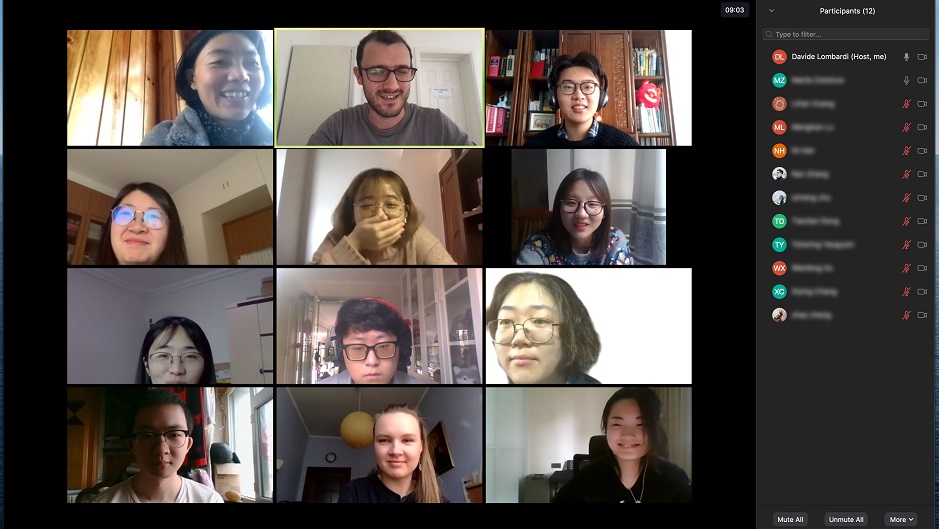27 Mar 2020
First in a two-part series. Part two here.
Moving to all-online instruction takes effort, but if our experience is an example, take heart, it will go just fine.
With a month of full online teaching under their belts, that’s the overall message from Xi’an Jiaotong-Liverpool University instructors to educators in other parts of the world just beginning all-digital instruction. In this two-part series, instructors share experiences they hope will help fellow teaching staff in other educational institutions whose physical campuses have closed due to the coronavirus spread.

Dr Qian Wang, XJTLU's ILEAD
XJTLU, with both students and instructors scattered across the globe, has dealt not only with new technical approaches to education but also time zone differences in teaching 14,000 students online. Yet instructors from a cross-range of disciplines interviewed indicated that not only are module learning objectives being achieved, but also new digital techniques can enhance onsite instruction in the future.
Rick Foster, an instructor in the University’s Language Centre, said that despite little experience with online teaching tools, he successfully made the switch.
“Using learning technology, such as web-conferencing or recorded lessons, had not been a major aspect of how I had taught before,” he said.
“I was apprehensive at first; however, our university has provided a series of excellent trainings to get us up to speed. As it turns out, these tools have some valuable educational features of which I was unaccustomed to or completely unaware of, which greatly enhances the students' online learning experience, and mine.
"Most of these apps and programs enable students to be much more engaged and be more pro-active learners."
Dr Cheng-Hung Lo of XJTLU’s School of Film and TV Arts is both the parent of school-age children who are now learning at home online and an educator at XJTLU. He has observed the effects of online education both on the receiving and giving ends.
“Before I tried teaching online, and before I observed my own children’s recent online learning experience, I thought these courses might feel less engaging than onsite courses. Instead, I think online courses engage students in a different manner,” Dr Lo said.
“In the classroom, the instructor standing in front of the class has a one-to-many relationship with the students. But with online teaching, the student has full focus on the instructor’s face and gestures. In a way, online instruction can feel more like a one-to-one conversation between teacher and student.”
As classes begin, Dr Paul Cheung of the University’s Department of English advises making small adjustments to create a more familiar experience for students not accustomed to online education.
“I sent out practical tips aimed at helping students deal with common issues, which include anything from adjusting audio to how to add shared notes online,” Dr Cheung said.
“I also try to find ways do the small but useful things that normally happen in a physical setting, such as welcoming students as they enter the virtual classroom.”
Dr Eduardo Medina of XJTLU’s Department of Health and Environmental Sciences said that creating a sense of classroom even though the class can’t be together physically is important.
“I asked students to upload video introductions telling the class who they are, what they are studying, and what project they want to do for this course. These relatively informal videos create a sense of human connection that might otherwise be missing,” Dr Medina said.
XJTLU educators noted that preparing for online classes, at least in the beginning, does take time.
“I ended up spending around 20 hours preparing my first recorded online lecture,” said Dr Qian Wang of XJTLU’s Institute of Leadership and Education Advanced Development (ILEAD).
“I tried to consider how the lecture would look from the student’s perspective,” Dr Wang said. “When I recorded myself for the first time, I realized how difficult it is for me to talk to a computer instead of a classroom. I ended up recording each part several times and then editing it.
“However, while the learning curve was steep, it wasn’t long -- about a week. And students aren’t expecting perfection. Take a risk, make some mistakes – it will be OK.”
Dr Davide Lombardi, of the XJTLU’s Department of Architecture+ Design, has been pleased with instructors’ ability to adapt.
“Speaking as a deputy head of department, it’s been great to see how well all the staff have been getting along with online instruction,” he said.
“What could have been a sort of ‘Greek tragedy’ as the result of a rapid switch to digital tools that were new for some resulted in no major problems to date.”

Dr Cheng-Hung Lo, XJTLU’s School of Film and TV Arts

Dr Davide Lombardi, Department of Architecture + Design, and his master's level Studio 4 module
By Tamara Kaup and Qiuchen Hu
27 Mar 2020
RELATED NEWS

Coronavirus crisis triggers huge growth in online learning
With the impact of the COVID-19 epidemic disrupting businesses and quarantining millions, at Xi’an Jiaotong-Liverpool University it has also proved the impet...
Learn more

XJTLU accelerates online education programme during epidemic
As the fight against the novel coronavirus epidemic continues, Xi’an Jiaotong-Liverpool University has implemented University-wide online for-credit educatio...
Learn more







